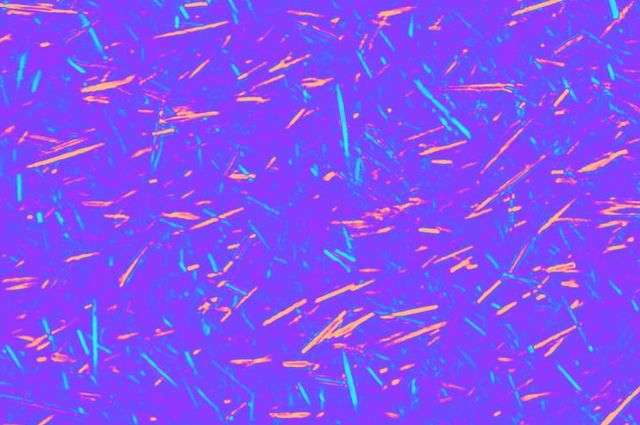Gout diagnostic platform uses computational microscopy to analyze uric acid crystals

UCLA researchers have designed a portable imaging system that can diagnose gout, a condition that affects more than 8 million adults in the U.S. alone.
The new system is compact and cost-effective, and it could allow many more primary care doctors to screen for the disease, which is the most common type of inflammatory arthritis.
The research, which was published in the journal Scientific Reports, was led by Aydogan Ozcan, UCLA's Chancellor's Professor of Electrical Engineering and Bioengineering and associate director of the California NanoSystems Institute, and John FitzGerald, a UCLA clinical professor of rheumatology.
According to the CDC, the incidence of gout in the United States is nearly three times more prevalent today than it was 50 years ago—likely because of the changing Western diet, and growing rates of obesity and hypertension. The condition occurs when uric acid levels in the blood increase to the point that the uric acid crystallizes. This leaves needle-like crystal deposits in the joints, tendons and ligaments, which triggers severe inflammation. It is caused by a combination of factors including diet, medication and genetics, and it occurs more commonly in those who consume red meat, drink large amounts of beer and are overweight.
The definitive test for gout calls for a doctor to draw joint fluid from a patient and then use a device called a compensated polarized light microscope to identify uric acid crystals in the sample. But recent studies have shown that primary care doctors usually opt to make their diagnoses without performing the procedure.
In addition, polarized light microscopes are bulky, heavy (weighing more than 20 pounds) and expensive ($10,000 to $20,000 or more). They also have a relatively small field of view, which can make it time-consuming to examine a large sample, and can produce unreliable test results. The examiners' ability to detect crystals can also vary widely depending on their level of training.
The UCLA-designed platform, based on a technology called lens-free on-chip microscopy, can perform wide-field imaging without the need for lenses. It uses holographic imaging to produce high-resolution images of the crystal-like objects—the telltale signs of gout—in the patient's fluid sample.
The technology works by sending a stream of light through a polarizer, through a sample of the fluid on a microscope slide, and then through another polarizer before it reaches an image sensor microchip, a component also found in mobile phone cameras and webcams. The image sensor captures the holographic diffraction pattern produced by the sample and feeds it to a computer with software that can quickly generate an image of the sample. The platform can use the entire active area of the image sensor chip—about 20 to 30 square millimeters, or approximately 100 times larger than standard optical microscopes can analyze at a similar resolution level—allowing for rapid analysis of larger volume of samples.
"With its wide sample area, cost-effectiveness and portability, our microscope can significantly improve the efficiency and accuracy of gout diagnoses, and it can be deployed even at the point of care and in clinical settings with limited resources," Ozcan said.
The UCLA technology could ultimately be used to diagnose other conditions that are caused by crystals forming in bodily fluids and that are currently diagnosed using conventional polarized light microscopes—kidney stones, for example.
More information: Yibo Zhang et al. Wide-field imaging of birefringent synovial fluid crystals using lens-free polarized microscopy for gout diagnosis, Scientific Reports (2016). DOI: 10.1038/srep28793
















